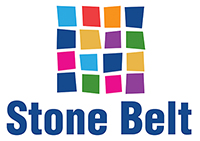(812) 332-2168 | 2815 East Tenth Street, Bloomington, IN 47408
SP Page Builder
Chapter Four
What do you want to do?
What are your goals in life?
• seeing people first, rather than diagnostic labels;
• using ordinary language and images, rather than professional jargon;
• actively searching for a person's gifts and capacities in the context of community life;
• strengthening the voice of the person, and those who know the person best, in accounting for their history, evaluating their present conditions in terms of valued experiences, and defining desirable changes in their life.
Stone Belt uses the principles of PCP in our approach with those we support.
Once we know what the person wants, we strive to tailor the supports so they best fit them. This might include the type of communication used, the daily schedule, the food preferences, the most comfortable environment, or how to respond when the person is feeling anxious. If they receive residential supports, we help them determine who they might like to live with and where. For employment, we are helping people find and keep a meaningful job. No two people served by Stone Belt have the exact same support needs, so each person has a different plan with goals toward achieving that plan. A large part of the training process for any new staff is learning these individualized supports.
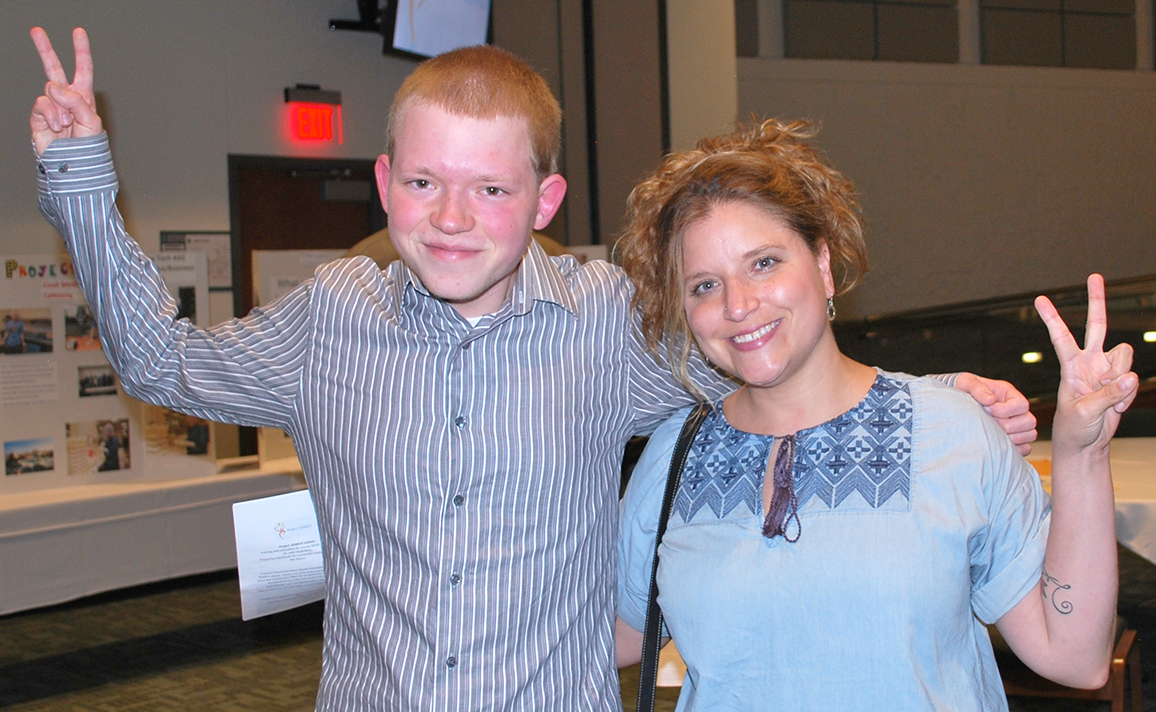
When Thomas first started in Stone Belt services, he was very clear that he wanted to become employed, but was unclear about how he would be paid and how the money would move from the employer, to the bank, and then to him. He had never received a paycheck, so he had no concept of how this system works. However, he was so enthusiastic about working and in a hurry to have all of this happen.
Thomas was accepted into Project SEARCH, Stone Belt’s internship program for young adults. As a part of that program, Thomas participated in job preparation classes and learned about what to do in a job: how to apply and interview; how to get along with co-workers; and how to solve problems at work. The program also gave him a chance to do internships at three different jobs: one in food service; one in shipping and receiving; and one in an administrative office. Thomas was so successful in his clerical rotation that he was offered a job at Ivy Tech when he completed Project SEARCH. Because Thomas was able to experience different types of work environments and duties, he was able to make an informed choice about accepting the job at Ivy Tech.
It is exciting to see a young man so eager to have a job be able to start that next chapter in his life. In addition to his work, Thomas has been supported to move out of a group home and into an apartment chosen by him and his two housemates. This was another of his goals that he has now realized.
The ability to be supported in all these choices in his life has transformed Thomas from a shy, nervous and sometimes lonely young man to a confident, happy and socially engaged man with even more goals and aspirations.
*Thank you to Susan Russ, director of Lifelong Learning programs for providing the background for this story.
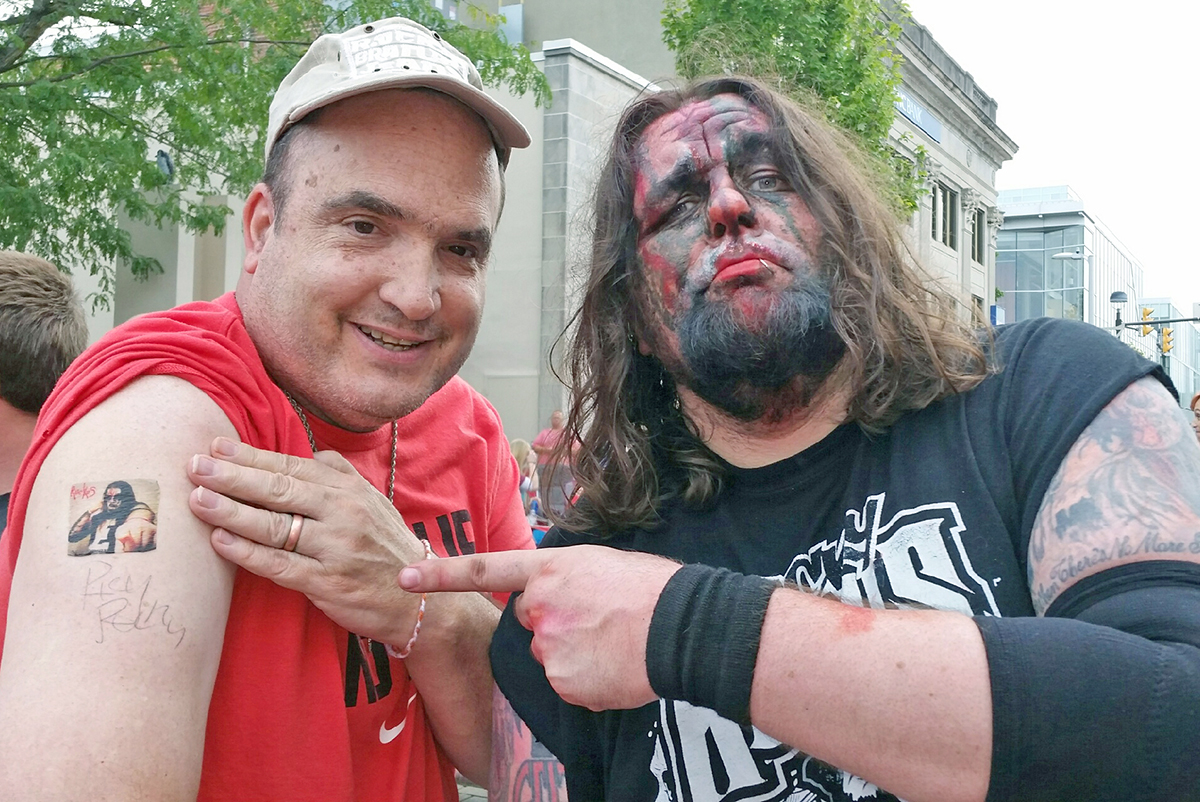
Sometimes well-meaning people that support a person with disabilities limit the choices they make in an effort to protect the person. For example, it might involve being overly firm about diet when the restrictions are unnecessary. Allowing the person to make their own choice, and then experience the consequences of that choice may help the person more in the long run. People often learn the most from the mistakes they make and to take that away limits growth and understanding of the world.
One of Stone Belt’s responsibilities is to determine a client’s cognitive competence, which is the person's ability to understand the choice being made and the consequences of that choice. And so, we need to determine whether a client really displays understanding of the issue, and the choice he or she is making. If the team isn't sure, then a decision making assessment that can be completed to help the team address this issue.
Though we may counsel someone making a decision and even warn them of the consequences, we try to provide the dignity of risk. If a client understands the possible consequences of the choice and the choice does not result in imminent harm, then the person’s decision should be honored. This means we might explore the decision with the client, and even offer an opinion, (depending upon our role with the client), but when the client continues to determine that his or her decision is firm, then we honor it. The phrase, experience makes the best teacher is true for people with disabilities, just like everybody else. Taking this occurrence away removes part of the human experience from the person’s life.
* Thank you to Mari Shawcroft, behavior support services coordinator for contributing to this segment.
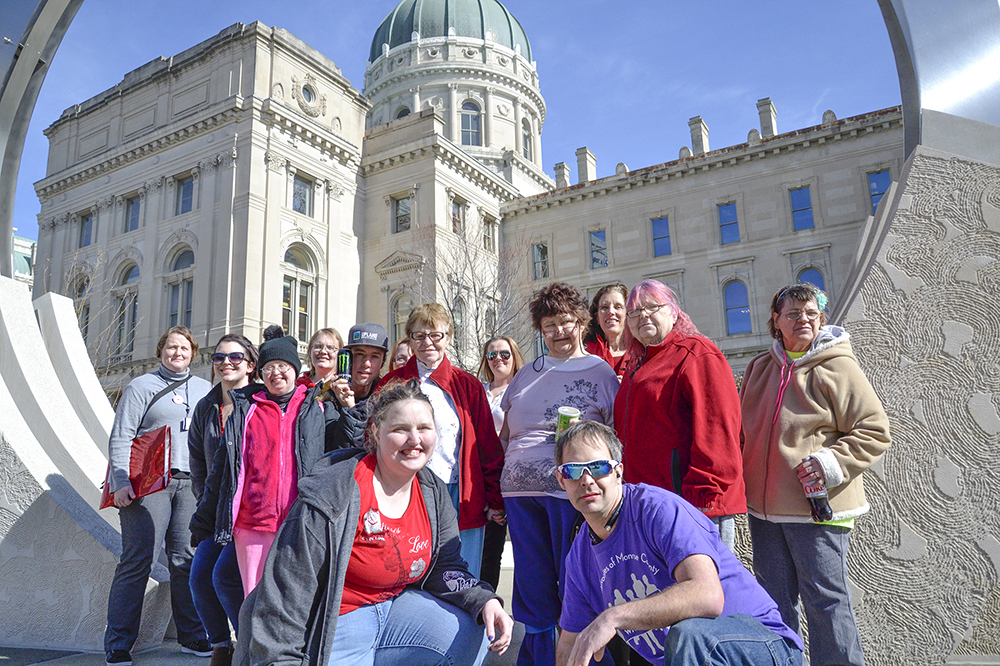
The Monroe County Self-Advocates receive support from Stone Belt to carry out their activities. They are active as part of Self-Advocates of Indiana. Currently they meet monthly, with elected officers that run the meetings and seek input from the group. Each summer a large contingent of the group attends the Self-Advocates of Indiana picnic, which gives members the opportunity to socialize with other self-advocates from around the state.
The highlight of the year, and one for which the group does a number of fundraising activities, is the Governor’s Council for People with Disabilities annual conference. This two-day meeting held in December gives self-advocates and other disability advocates a chance to learn about ways they can be advocate for improvements in the lives of people with disabilities in Indiana and beyond.
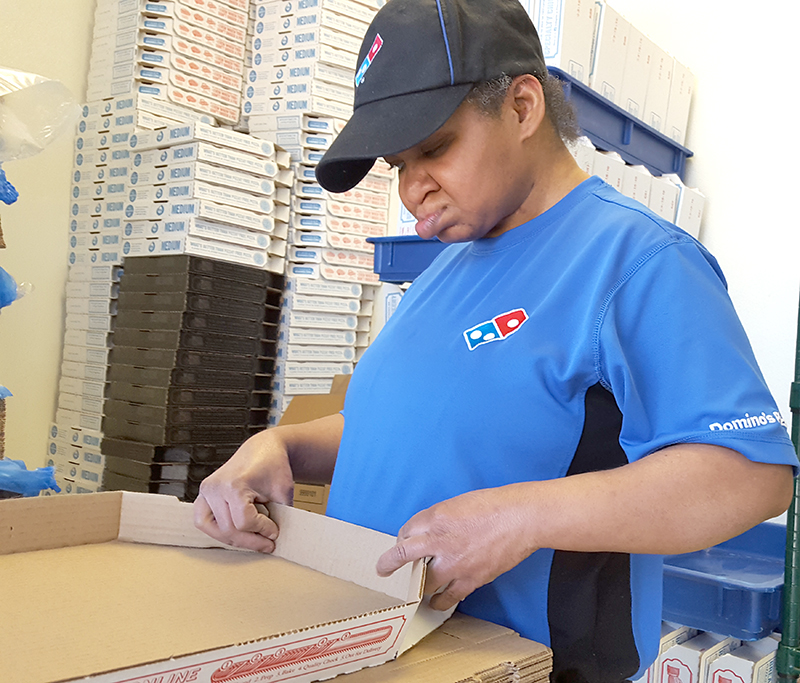
changes her world
'creating' pizza boxes
By Tyler Frazee
Lifelong Learning Coordinator
The scene is a familiar one in literature and film. Our hero, learning their way in the world, struggles with a task. Despite all their strength, all of their resolve, it simply cannot be done.
Then the wise teacher asks our hero to stop relying on the skills they know they have, to let go of the knowledge they possess, and to open themselves to the impossible simply becoming the possible. They are asked to look at the problem not with the eye, but rather with the spirit.
The real world does not, of course, always cooperate with this approach, but when the answer to the problem eludes our external abilities, looking within can often lead us to unexpected results.
Karen Petty was born with both deficits in her vision and her hearing. Most of us would struggle simply imagining the challenges presented by being blind or deaf; the combination becomes nearly unfathomable. How do we even approach supporting a client with dual-sensory deficit? How do we know this person’s view of their world when they cannot see it or hear it or speak to us about it? The answer is rooted in the hero’s story.
In Karen’s case, her physical deficits were never a problem. She never possessed the senses she lacks and never relied on them to inform her world. The challenge for us was to let go of how we experience the world informing us about how Karen may do the same. Consider this question: What happens when a pencil rolls off a table? What does it look like as it rolls and, ultimately, falls through space and hits the floor? What sounds are produced by this process? How does the pencil interact with the environment before, during, and after?
Karen has never seen nor heard a pencil do what I have described. She relies on her sense of touch to initially encounter everything around her. If she feels a pencil on the table in front of her, and then it is not there, it may have simply seemed to disappear. Through experience, she has learned that things once in front of her do, on occasion, end up leaving that space to go elsewhere.
Karen uses limited sign language but she knows the sign for “more.” You and I think of “more” generally meaning “additional quantities of,” but for Karen, more means “reintroducing that which was there but now is gone,” an eloquent adaptation of the meaning.
Now how is this known? Karen uses the sign for “more” when she lacks something she needs or desires. If her searching hands cannot find that spoon that was in front of her a moment ago she signs “more.” Cannot find her left shoe? “More.” Finished folding a stack of pizza boxes at work? “More.” She uses “more” to activate a change in her environment. She has internalized this as a method that produces results from the people who support her.
In turn, we observe her actions and act as agents of the external change she is requesting. Karen cannot physically know we will respond to her signs, but deep down, she believes we will. We cannot emotionally know what Karen feels in these moments, but we can see how she responds, how she appears at ease and content after receiving “more.”
Influence over her environment is key in obtaining this state of contentedness. These observations have led to discoveries that show Karen is most content when at work. Landscapes are navigated, doors are opened, food and drink are presented, and medications are administered, all with the ever-present support of staff. Choices are available, but when it comes to how those choices are facilitated, that is largely a function of someone other than Karen.
Enter the job.
Karen folds pizza boxes for a living. She has done this for about 15 years. She is a pro. You might think this job difficult for someone who cannot see, but physical limitations were never forefront for Karen, because they have always been there. In the beginning, she quickly mastered the creases and bends, the tabs and slots, of a well-folded pizza box.
The greater challenge was would she want to stand in one spot for an hour or two and fold boxes. Seems a little boring, right? As soon as she finished a stack of boxes, however, she would quickly sign “more.” We were on to something. She was asking for “reintroducing that which was there but now is gone.” She had bought into the process.
Related to finding contentedness in the influence that signing “more” produces, Karen also finds satisfaction in routine. The routine of folding boxes was established, meshed well with the “more” mode of communication, and we seemed to have something Karen could do to earn a paycheck.
End of story, right?
Then the laughter started.
Observation of a client completing a routine is often a function of determining how best to support that client in obtaining the maximum independence therein. As noted before the pizza box folding routine was established quickly and smoothly.
Karen was completing the task 100 percent independently. She was content. She even seemed happy. Grinning. Giggling a little. Cooing like when you find deep satisfaction in some delicious morsel or heartfelt moment. Finally, she busted out in full-on belly laughter. Her whole body shook and she kept on folding. We were not observing anything short of pure delight in the task at hand. But why?
Here is where the circle, or rather pizza box, closes. Here is where the hero’s story, where Karen’s story, sees the difficulties of influence over the physical world surpassed by the revelations provided by the internal spirit.
In watching Karen fold pizza boxes and happily doing so, we wondered how was this different? How was this just not another task she was completing, another routine? She mastered the external, the physical act of manipulating the box, but there was more.
The answer is simple, but only when you really “see” it, hidden beyond sight. Karen was not folding pizza boxes, she was creating them. She was taking awkward, flat sections of cardboard with irregular edges, creases, and dimensions that served no individual purpose and manipulating them until they became recognizable, utilitarian objects with defined purpose. Their dimensions could be quickly understood by sight and by touch.
Karen had created form from chaos. Karen had used her hands to change one thing into another. Karen had changed her world. This made Karen very happy. She wanted to do it again and “more,” “more,” “more.”
Together we had discovered the unexpected, a simple physical task which produced complex emotional satisfaction. We now had a guide to producing other situations in which Karen found great joy. Putting away folded socks was not fun. Sorting mixed up socks was the way to go. Stacking blocks? Boring. Breaking uncooked spaghetti into infinitesimally smaller pieces? A blast.
Touching something that produces sustained change is Karen’s joy and how she became master of her world. Looking with “eyes” that could see how internal motivation produced external results allowed the journey from pupil to master to be taken by both Karen and staff, and together theirs’ is truly the hero’s reward: a job well done.
© 2017 Stone Belt. All Rights Reserved.
